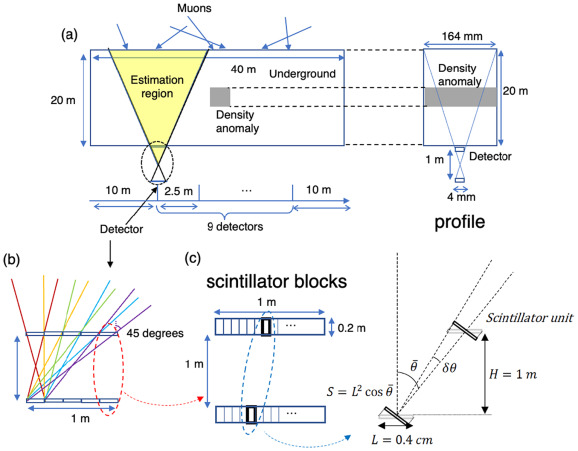REPORTS
Reports
“Anomaly Detectability in Multidimensional Muon Tomography under a Trade-off Relationship between Anomaly Size, Density Contrast, and Exposure Time” was published.
In February 2023, Matsushima laboratory’s paper, “Anomaly Detectability in Multidimensional Muon Tomography under a Trade-off Relationship between Anomaly Size, Density Contrast, and Exposure Time” was published in the journal of Applied Geophysics.
▼Abstract
Muography is a method for estimating the density distribution inside an object by using muons produced by cosmic rays. Multidimensional muon tomography has recently become popular for counting muons from multiple directions using an inversion technique to reconstruct multidimensional density distributions. This study investigated anomaly detectability in multidimensional muon tomography under a trade-off relationship between anomaly size, density contrast, and exposure time. The L1- and L2-norm regularised least squares methods (LSMs), which are two different inversion methods based on the least squares method, were used and compared to reconstruct density distributions. Additionally, to investigate the applicability of an objective and automated evaluation method for anomaly detection, machine learning and outlier tests (OT) were used as two criteria for anomaly detection. The merit of anomaly detection visualization based on machine-learning techniques was demonstrated. Finally, a quantitative relationship was derived between anomaly size, density contrast, and exposure time. Notably, there are no universal inversion techniques or anomaly detection methods for all cases. Thus, it is necessary to evaluate the performance of multidimensional muon tomography based on the observation situation and exploration target by applying the approach proposed in this study.
▼Read more
https://www.sciencedirect.com/science/article/pii/S0926985122003913
